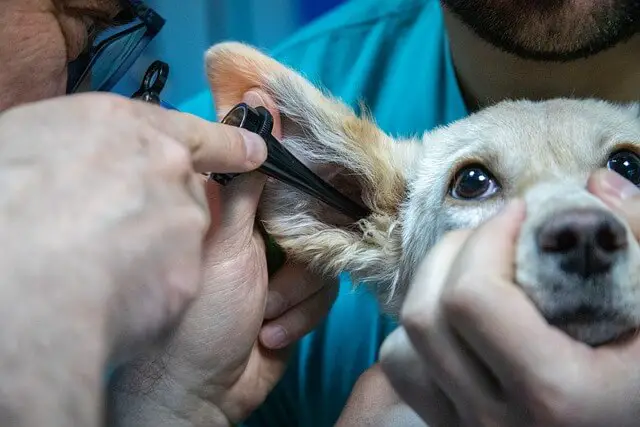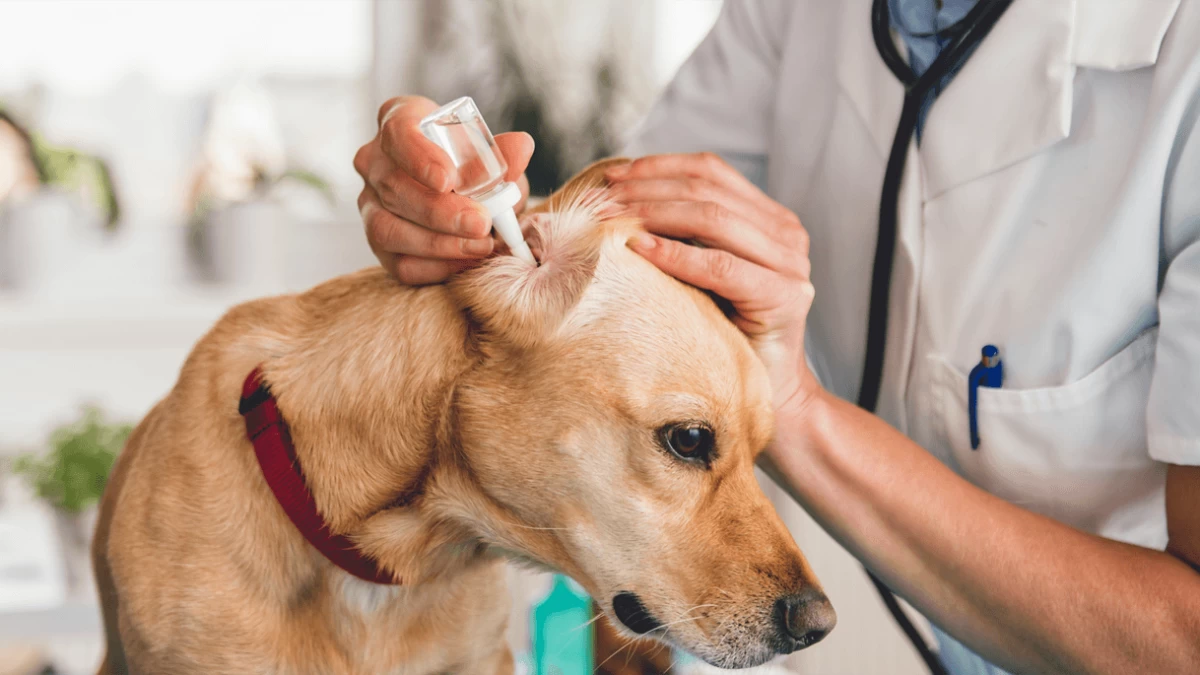Dog Ear Infection - Causes, Treatments & Prevention
17.11.2020.
If you just became a new dog owner, it is great that you are learning about potential health problems your dog might have, and ear infections can undoubtedly become an issue. Experienced owners can easily spot signs indicating their dog might have ear infections, and if you are a new member of the dog world, you might miss those signs.
Let’s start with the basics.
What is a dog ear infection?
Infections are a nasty problem, and dogs can have three types of ear infections called otitis externa, interna, or media. These three similar but different ear infections affect different parts of the ear;
- Otitis externa - This type of ear infection affects the external parts of the ear canal.
- Otitis media - This is an infection of the middle parts of the ear canal.
- Otitis interna - This is a type of infection that affects the inner parts of the ear canal.
Some dog breeds are prone to ear infections, especially breeds with long, floppy ears like the Cocker Spaniel or a Redbone Coonhound. It is also estimated that around 20% of all dogs have some sort of ear problem that can affect one or both ears. Luckily for you, you came to the place where you can learn how to prevent, ease, and heal these pesky ear infections.

How to spot ear problems in dogs?
A keen and experienced eye can easily spot tell-tell signs that your dog might be having ear infections. Some of the most common signs or symptoms are;
- Whining
- Head shaking
- Pawing
- Scratching
- Redness of the area
- Dark discharge
- Unpleasant odor
- Scabs in the ear
- Itchiness
- Swelling of the ear canal
If you notice your dog acting strange, losing their appetite, or being generally “down,” it can be a sign of a health issue, and if you combine these symptoms, it is most likely an ear infection.
Causes of ear infection in dogs
Dog’s ear canal looks a lot different than the ear canal of us humans. Their ear canal is L-shaped and holds fluids, making them prone to different types of ear infections. The most common ear infections in dogs are caused by;
- Foreign bodies lodged in their ear
- Injury
- Too much cleaning
- Autoimmune disorders
- Endocrine disorders
- Moisture - moist ear canal is an ideal area for the development of bacteria and yeast.
- Allergies - nearly fifty percent of dogs with skin allergies end up with ear problems, and around eighty percent of dogs with food allergies end up with ear disease.

Veterinary diagnosis
Now that you know what signs to look for, and if your dog has some of these symptoms, your best option is to go to a vet that’s nearest to you. Vets are your best allies in fighting any sort of health issues your dog might have, and ear infections can be really painful. You should wait for no reason, so make sure that you take your dog to the vet as soon as possible.
Prepare some information for your vet, and these are some questions your vet might require answers to;
- Is your dog on any medication?
- Does your dog have any allergies?
- Did your dog have any symptoms? (like the ones we mentioned earlier)
- What are some recent activities your dog might have had that include water? (grooming, swimming, bathing, etc.)
- What kind of diet does your dog have?
- Did your dog eat anything unusual recently?
- Did your dog have prior ear infections?
- What symptoms did you notice?
Based on your answers, the vet can make an accurate diagnosis and tell you precisely what to avoid and how to treat the problem that occurred. The examination will probably include these steps;
- Assessment of the affected area where vets will check for infection signs such as swelling or discharge traces.
- Otoscope examination where the vet can check the inner parts of the affected ear.
- A light touch to assess the pain level.
- Swabbing the ear and analyzing it.
- In the worst cases, the vet can make a biopsy or even an x-ray.
How to treat an ear infection in dogs?
The first thing your vet will do is completely clean your dog ear with a medicated ear cleaner. The vet may tell you which medicated dog ear cleaner you should buy and use at home to help your dog defeat the ear infection. This is mostly enough, and the condition should be resolved in one or two weeks.
It is also possible that your dog might have to take antibiotics or anti-inflammatory medication. This is only prescribed if bacteria cause the infection, and the condition became pretty serious.

Yeast infection in dogs
Both bacteria and yeast live in a healthy dog ear canal, but sometimes, they can get off-balance and cause ear infections. If your dog swims often or rolls around in puddles, additional fluid can throw that balance off, and the yeast can spread. If you noticed blackish discharge or a wet, “yeasty” smell, it is probably a yeast ear infection. The yeast infection in dogs is usually quite itchy, but luckily for our dogs, it is not painful.
Ear mites in dogs
Ear mites can cause an ear infection, and if that happens, you need to call your vet and ask for advice. Puppies are especially prone to ear mites, and you can spot them by the “coffee-ground” discharge they leave, and the dog’s ears can have reddish crustiness. You must isolate the infected puppy if you have more pets in the house because mites can quickly infect other pets.
TECA surgery
In the worst-case scenario, when treatment hasn’t helped, your vet might recommend the TECA surgery. TECA is short for Total Ear Canal Ablation, and it is a surgery where the vet will completely remove the dog’s ear canal. That is usually done as a last option where nothing else can help the dog’s ear. It is also a way to remove the infected tissue completely.

At-home treatment of dog ear infection
Some owners can be looking online to find different ways to treat a dog ear infection naturally, at home. That is never a good idea because you cannot know how severe the infection is. Some natural “medicine” is used like;
- Green tea
- Grapefruit Seed Extract
- Yogurt
- Calendula Tincture
- Oil Of Oregano
None of these are actually medicine, and even if they have a soothing effect on your dog’s infection, nothing can replace an actual treatment your vet can provide. Plus, if something complicated happens, you don’t want to be responsible for potential damage and hurt your dog might suffer.
Prevention
It is always better to prevent than to cure a disease. You can never prevent something 100% from happening, but there are precautions you can take as a dog owner to help avoid these problems for your dog. Excess water is often the cause of dog ear infections, and if you make sure that their ears are properly dried after bathing or swimming, you might prevent excess yeast and bacteria from infecting your dog’s ears. Proper ear hygiene is also a great way to stop these problems from happening.
World Dog Finder team







Share